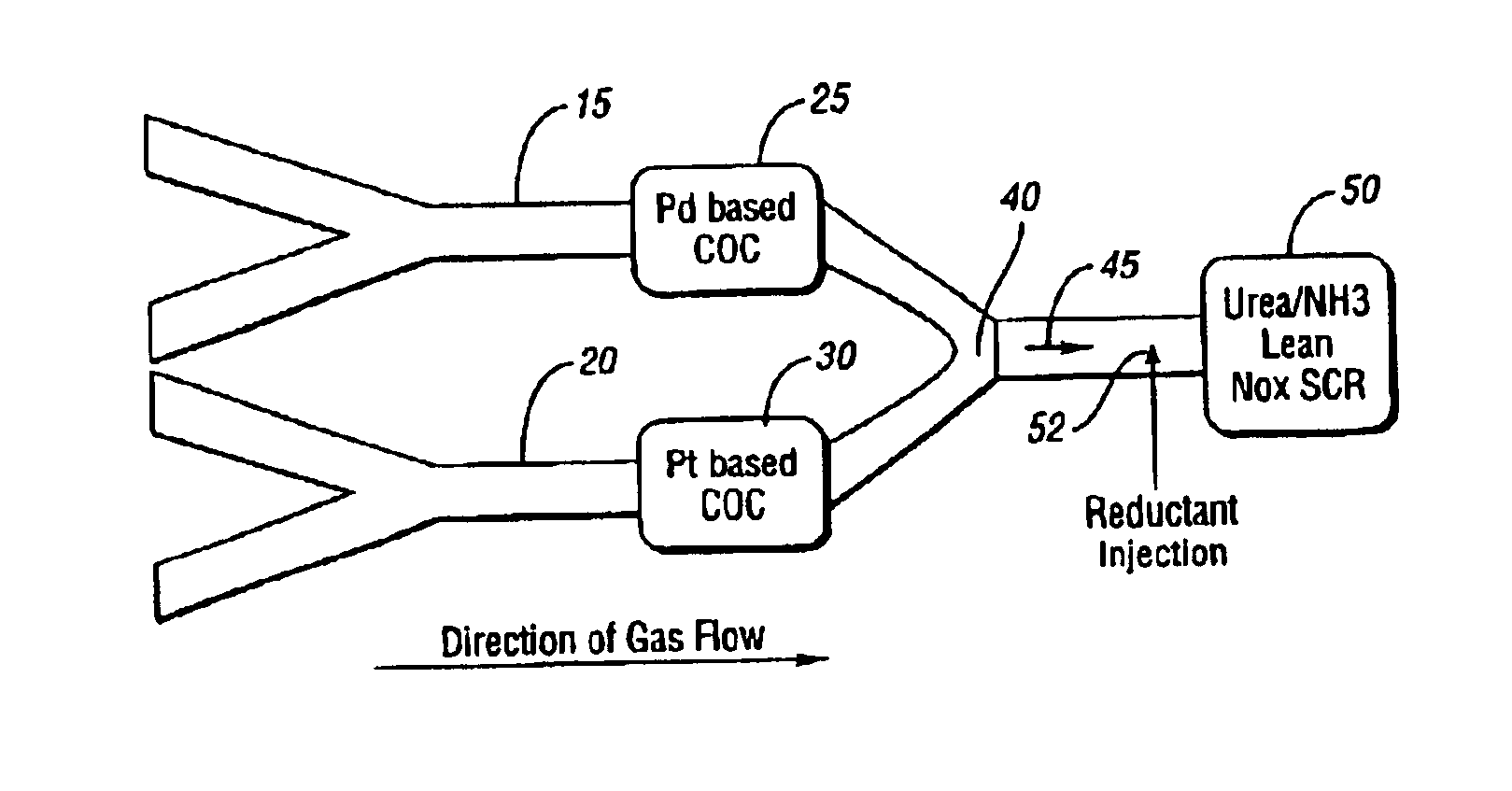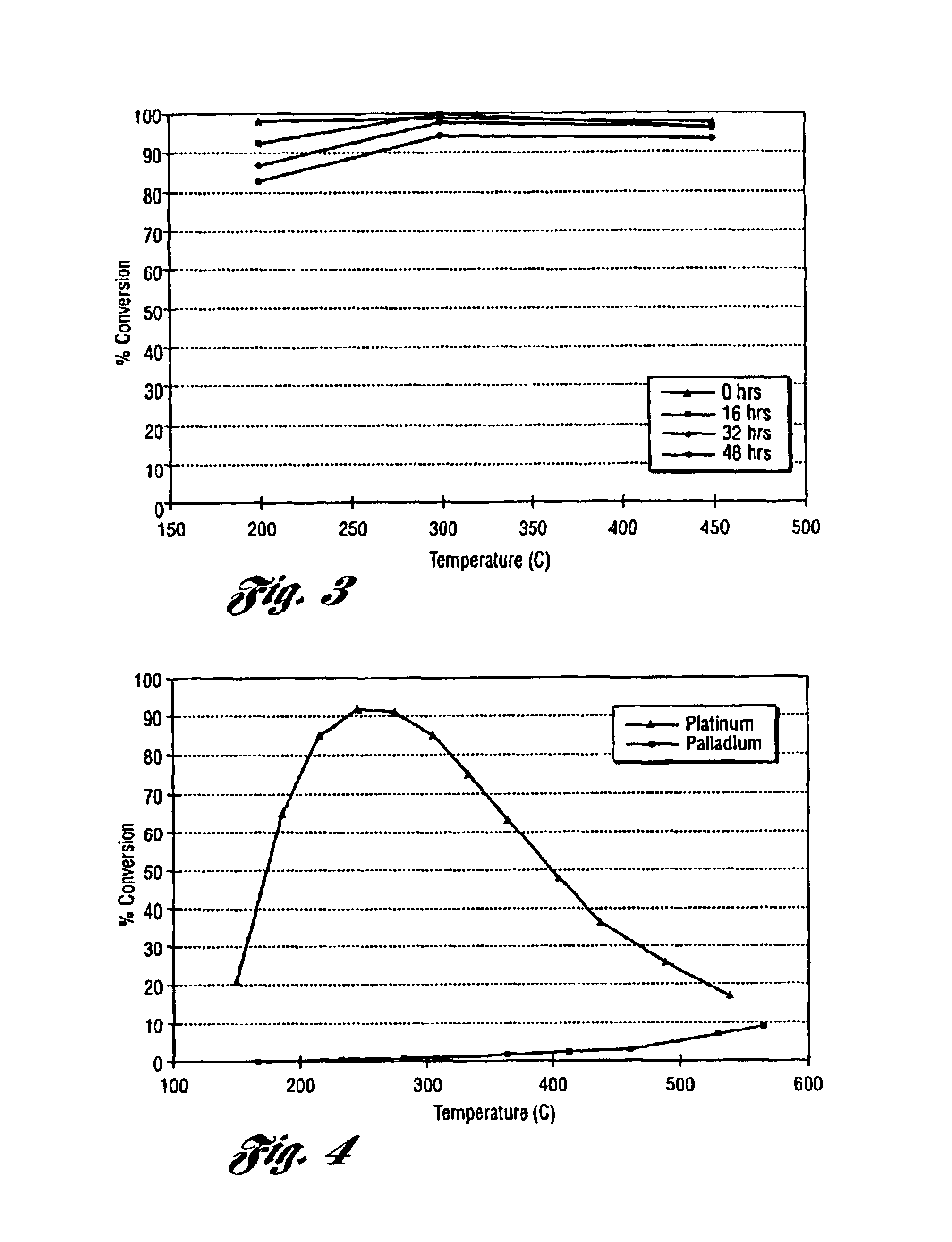Bimodal catalyst-urea SCR system for enhanced NOx conversion and durability
a technology of nox conversion and scr system, which is applied in the direction of machines/engines, mechanical equipment, separation processes, etc., can solve the problems of adverse effects on the utilization of such catalysts, ineffective conventional three-way catalysts, and difficult control of nox, so as to reduce nox in exhaust gases, efficiently oxidize, and quickly and efficiently reduce
- Summary
- Abstract
- Description
- Claims
- Application Information
AI Technical Summary
Benefits of technology
Problems solved by technology
Method used
Image
Examples
Embodiment Construction
Reference will now be made in detail to presently preferred compositions or embodiments and methods of the invention, which constitute the best modes of practicing the invention presently known to the inventors.
The present invention provides a method of reducing NOx in exhaust gases of an internal combustion engine. Furthermore, the present invention provides a method in which hydrocarbons are efficiently removed from a vehicle exhaust prior to the exhaust gases flowing into an SCR catalyst. The deleterious effects of hydrocarbons on an SCR catalyst are illustrated with reference to FIG. 1. In FIG. 1, the percent conversion of NOx is plotted versus temperature for a gas stream containing zero, 450 ppm of 1-to-1 mixture of propane and propene, and 450 carbon ppm of a 1:1:1 mixture of propane, propylene and toluene. As used herein, “carbon ppm” refers to the amount of total carbon atoms. FIG. 1 clearly show that the presence of hydrocarbons decreases the efficiency of NOx conversion.
T...
PUM
| Property | Measurement | Unit |
|---|---|---|
| temperature | aaaaa | aaaaa |
| temperatures | aaaaa | aaaaa |
| concentration | aaaaa | aaaaa |
Abstract
Description
Claims
Application Information
 Login to View More
Login to View More - R&D
- Intellectual Property
- Life Sciences
- Materials
- Tech Scout
- Unparalleled Data Quality
- Higher Quality Content
- 60% Fewer Hallucinations
Browse by: Latest US Patents, China's latest patents, Technical Efficacy Thesaurus, Application Domain, Technology Topic, Popular Technical Reports.
© 2025 PatSnap. All rights reserved.Legal|Privacy policy|Modern Slavery Act Transparency Statement|Sitemap|About US| Contact US: help@patsnap.com



